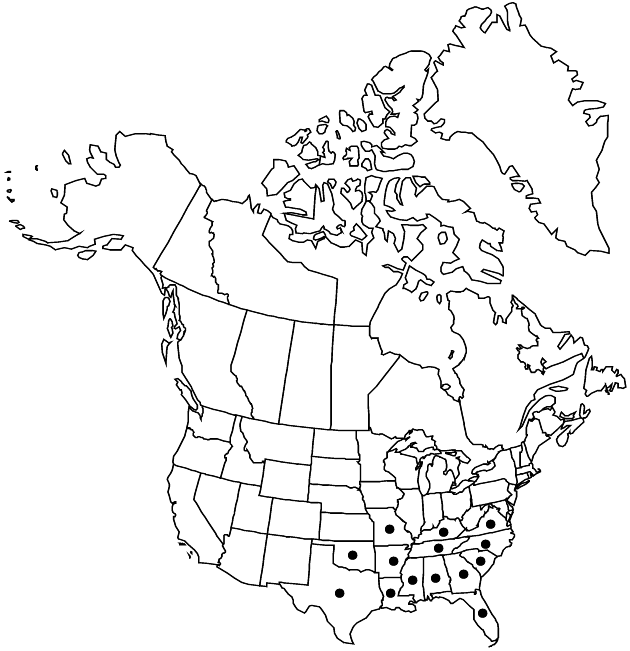Silphium asteriscus var. asteriscus
Endemic
Synonyms: Silphium asperrimum Hooker Silphium asteriscus var. scabrum (C. Mohr) H. E. Ahles Silphium dentatum var. gatesii L. M. Perry Silphium gatesii Michaux Silphium integrifolium var. gattingeri Silphium laevigatum Elliott Silphium scaberrimum
Treatment appears in FNA Volume 21. Treatment on page 82.
Plants 40–150 cm. Leaves: basal caducous; cauline opposite or alternate; faces hirsute, hispid, or scabrous. Paleae puberulent to scabrous. Ray-florets 8–20. Disc-florets 35–110.2n = 14.
Phenology: Flowering summer–early fall.
Habitat: Prairies, meadows, open forests, roadsides
Elevation: 50–1000 m
Distribution
Loading map...

Ala., Ark., Fla., Ga., Ky., La., Miss., Mo., N.C., Okla., S.C., Tenn., Tex., Va.
Discussion
The name Silphium asperrimum has been misapplied to S. radula. Based upon examination of a photograph of the type and of the original description, S. asperrimum should be synonymized with S. asteriscus.
Selected References
None.
Lower Taxa
None.
"broader" is not a number.
... more about "Silphium asteriscus var. asteriscus"
introrse +
connate +
herbaceous +
acute;acuminate +
scarious +
absent +
hirsute +
papillate +
bristlelike +
continuous +
caducous +
simple +
elliptic +
ovate;falcate;ovate;falcate;lanceolate +
winged;ribbed;winged;ribbed +
1;15 +
stigmatic +
absent +
zygomorphic +
yellow +
winged +
dimorphic +
staminate +
staminate +
straight +
distinct +
proximal +
1;5 +
bisexual +
dispersed +
singly +
discoid +
indeterminate +
surrounding +
campanulate;hemispheric +
deltate +
2-carpellate +
inferior +
attached +
anatropous +
persistent +
fragile +
falling +
absent +
tough +
thick +
absent +
connate +
persistent +
distinct +
falling +
Sp. Pl. +
1753 +
pistillate +
absent +
fertile +
paleate +
flat;slightly convex +
fibrous +
exalbuminous +
modifed +
2;3 +
Endemic +
alternate +
branched +
erect +
terete +
continuous +
2-branched +
papillate +
Silphium asteriscus var. asteriscus +
Silphium asteriscus +
variety +
cylindric +
narrow +
much shorter +
cylindric +
shorter to longer than campanulate +
perennial +